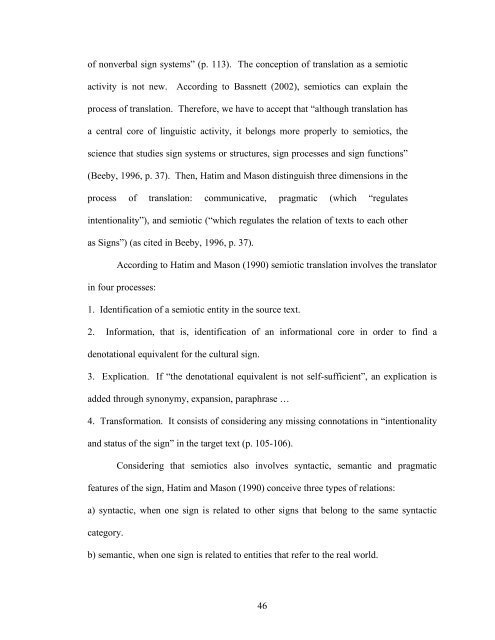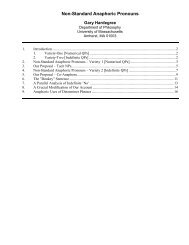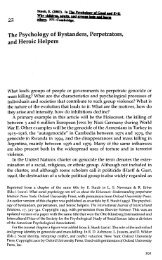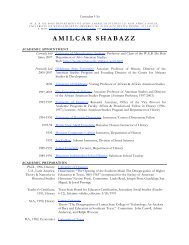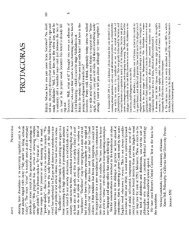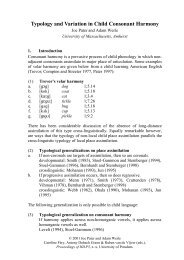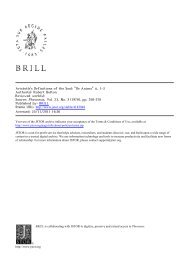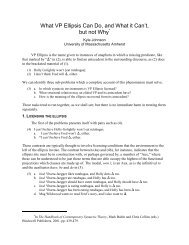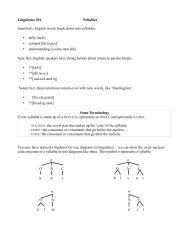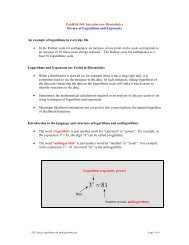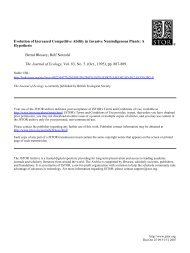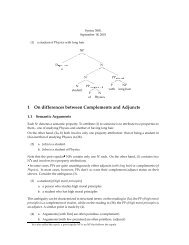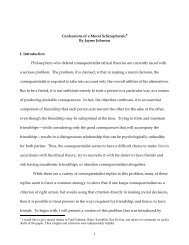rethinking translation in the second language classroom
rethinking translation in the second language classroom
rethinking translation in the second language classroom
Create successful ePaper yourself
Turn your PDF publications into a flip-book with our unique Google optimized e-Paper software.
of nonverbal sign systems” (p. 113). The conception of <strong>translation</strong> as a semiotic<br />
activity is not new. Accord<strong>in</strong>g to Bassnett (2002), semiotics can expla<strong>in</strong> <strong>the</strong><br />
process of <strong>translation</strong>. Therefore, we have to accept that “although <strong>translation</strong> has<br />
a central core of l<strong>in</strong>guistic activity, it belongs more properly to semiotics, <strong>the</strong><br />
science that studies sign systems or structures, sign processes and sign functions”<br />
(Beeby, 1996, p. 37). Then, Hatim and Mason dist<strong>in</strong>guish three dimensions <strong>in</strong> <strong>the</strong><br />
process of <strong>translation</strong>: communicative, pragmatic (which “regulates<br />
<strong>in</strong>tentionality”), and semiotic (“which regulates <strong>the</strong> relation of texts to each o<strong>the</strong>r<br />
as Signs”) (as cited <strong>in</strong> Beeby, 1996, p. 37).<br />
Accord<strong>in</strong>g to Hatim and Mason (1990) semiotic <strong>translation</strong> <strong>in</strong>volves <strong>the</strong> translator<br />
<strong>in</strong> four processes:<br />
1. Identification of a semiotic entity <strong>in</strong> <strong>the</strong> source text.<br />
2. Information, that is, identification of an <strong>in</strong>formational core <strong>in</strong> order to f<strong>in</strong>d a<br />
denotational equivalent for <strong>the</strong> cultural sign.<br />
3. Explication. If “<strong>the</strong> denotational equivalent is not self-sufficient”, an explication is<br />
added through synonymy, expansion, paraphrase …<br />
4. Transformation. It consists of consider<strong>in</strong>g any miss<strong>in</strong>g connotations <strong>in</strong> “<strong>in</strong>tentionality<br />
and status of <strong>the</strong> sign” <strong>in</strong> <strong>the</strong> target text (p. 105-106).<br />
Consider<strong>in</strong>g that semiotics also <strong>in</strong>volves syntactic, semantic and pragmatic<br />
features of <strong>the</strong> sign, Hatim and Mason (1990) conceive three types of relations:<br />
a) syntactic, when one sign is related to o<strong>the</strong>r signs that belong to <strong>the</strong> same syntactic<br />
category.<br />
b) semantic, when one sign is related to entities that refer to <strong>the</strong> real world.<br />
46


